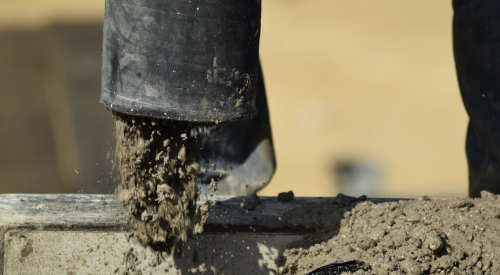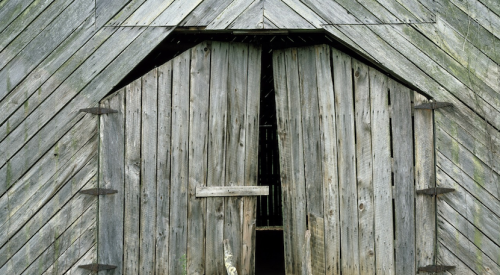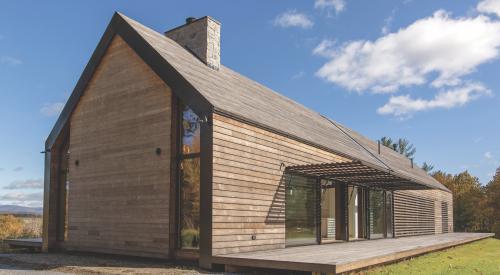| E-mail Ron Jones at greenbuilder@juno.com.
|
Some things are simply fundamental to a process. When it comes to building homes in this country, certain things come to mind for anyone who has been involved for any length of time. For instance, if you’ve ever experienced the excitement of breaking ground on a new project you’ll most likely never forget it. There is just something about the methodical preparation of the excavation equipment and the deliberate movements of the operators that build up to that moment when dirt is actually being moved. Then there is the smell of newly opened earth. There is no other experience I can think of that is quite the same as that.
There is the pouring of a concrete slab in the early morning chill. The warm vapor rises like steam from the mix. Then there is the sound of the trucks and the workmen as they move intently about, making sure that the proper procedures are followed each step of the way.
Getting a slab placed and finished is one of the large benchmarks of a project. It means that an awful lot of work has already been accomplished and that the next stages are just now about to begin.
Most of us, though, might agree that no step in the process quite compares with opening that first bundle of lumber and beginning to bring a project "out of the ground". In this country, most homes are still built with wood, and I’d venture to say that the majority of home builders even today consider themselves to be carpenters in one way or another.
In his classic volume, "A Sand County Almanac," naturalist Aldo Leopold wrote that the two "basic" tools are a shovel and an axe. He contended that a shovel is all anyone needs to plant a tree and an axe is the only thing needed to harvest one. He wrote of his pleasure in sinking a freshly file-sharpened shovel blade into the earth. (How long has it been since you saw anyone sharpening a shovel with a file?)
It is unlikely that a person can plant a tree and end up harvesting that same tree in one working lifetime, at least harvesting a tree with any meaningful usable lumber. Building material, specifically dimensional lumber from trees, takes longer to grow and produce than the average span of most home builders’ careers.
Time Warp
Fortunately, it doesn’t have to work that way when you go the other direction in time. We recently worked on a project that allowed us the opportunity to use vintage timbers; lumber that had been harvested and milled more than a century ago.
When trying to decide what to use for some of the architectural and structural wood elements in the project we came upon a source of reclaimed timbers right in our own backyard in Santa Fe. The owner makes available an assortment of timbers from around North America that are salvaged from a variety of structures being torn down.
The yard is a builder’s playland. It features a huge band saw and forklift and there’s a nice showroom/office with lots of samples on display. The real attraction though, is the piles and stacks of big timbers. They may be cedar pilings from the bridges of the Great Salt Lake, or some special variety of poplar or pine or some other conifer from as far away as Alaska.
The timbers we selected needed to be very sound structurally so we chose old growth West Coast Douglas fir. The particular pieces came from a salvaged lumber mill in British Columbia and were apparently added to the mill structure sometime in the last half of the 1800s. Since they were protected from the elements they have essentially been seasoning ever since. Even though they were in use all those many years, doing the structural jobs for which they were originally chosen, they have only become stronger and more beautiful with the passage of time.
Any movement to which they may have been inclined took place decades ago, resulting in timbers whose stability and quality can be appreciated by even the most demanding carpenters. There is probably no new harvest timber on the continent that can favorably compare.
Eric Sloane, in "A Reverence for Wood," writes lovingly of the white cedar that was "mined" from the swamps of New Jersey during the 19th century. It was valued beyond any other material for wood shingles and was used on uncounted thousands of roofs and north facing walls throughout the eastern United States. The practice apparently prospered all the way up until the time of the Civil War.
Sloane writes about the dismantling of his barn in order to salvage the lumber, and in the process gives us incomparable insights into the understanding that the early carpenters of America had of the various species -- oaks, chestnut, pine, birch, walnut, cedar, spruce, ash. The list goes on and on.
Building vs. Producing
Lumber may very well be the best example of the connection between a builder and his materials. Even the simple act of crowning a set of studs for a partition links every modern-day framer with the generations of carpenters who came before. And it may be the best way to express what is missing in so much of the building that goes on around us. Have we as builders lost that sense of being connected -- being a part of -- the buildings we erect?
There is more to building than simply producing. I would argue that no one puts more of himself into his product than a real builder does, and that traditionally, no one has a greater appreciation for the materials needed for that product. It doesn’t matter whether it’s a lumber product, a masonry component or metal, whether it’s milled, manufactured, engineered or fabricated; everything that goes into the construction of a building -- a home -- began as a natural resource, be it renewable or not. Each part needs to be considered as valuable.
Our salvaged fir timbers are run through the big band saw to clean a thin layer off each face, ripped to the prescribed dimensions and then trucked down to the job site where they are matched, cut to length and installed. We will finish them by lightly sandblasting the exposed surfaces to raise the grain and remove any remaining stains before applying any color and sealants to them.
Ultimately, our objective is to end up with an element in the house that brings more than a visual aesthetic to the project. It also contains a deliberate thread of history -- a connection to earlier values that runs through the fabric of the house. To reuse a material in a modern structure, when it has already had a century of service to its credit, is somehow very satisfying to us as builders, and to our customers.
I began counting growth rings on one twelve by twelve from the center of the heart outward toward one corner and quit after 150. For at least a century and a half that fir stood on some Cascade mountainside before falling to the axe. It is about to enter a second century of bearing a structural load, and of bringing beauty and pleasure to those who observe it.
Someday in the future, I hope someone will recognize its value and once again reclaim it for use in yet another capacity. Who knows, maybe it will be sawn into planks for flooring or for stair treads, or maybe even used in a piece of furniture.
Meanwhile, I might just go find a file and try sharpening a shovel. Then I may plant a nice tree. Not for me, you know, but for some home builder in the future who has an eye for nice lumber and a soft spot for old timbers.










